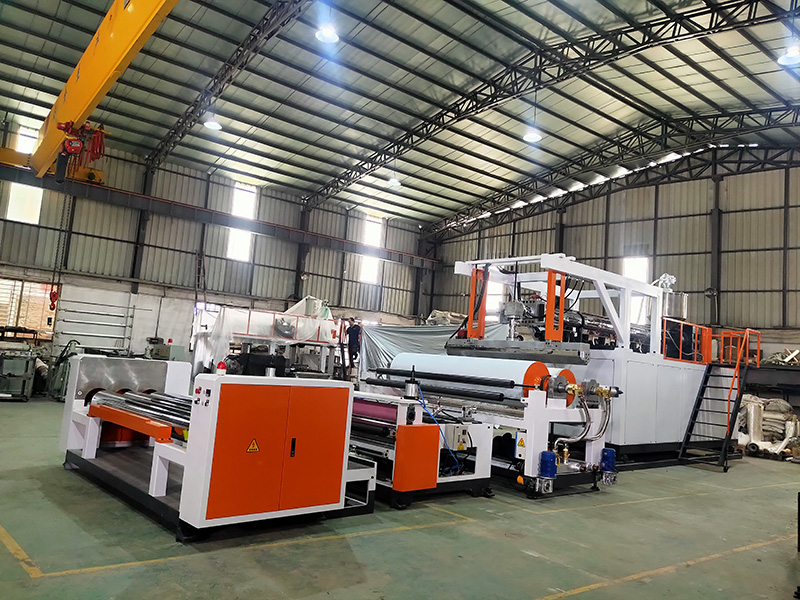Casting machine refers to the special equipment for making cast film. A high-precision electronic ceramic casting machine is used to use alumina as the main raw material for ceramic casting. First, the crushed powder is mixed with binder, plasticizer, dispersant and solvent to form a slurry with a certain viscosity. Flowing down from the hopper, it is scraped and coated on the special base tape with a certain thickness by a scraper. After drying and curing, the film is peeled off from the top to become the green tape, and then the green tape needs to be punched according to the size and shape of the finished product. Lamination and other processing treatments are carried out to form the finished blank product to be sintered. It has the advantages of low cost, high quality, no toxicity, simple production process and the like.

The difference between casting machine and film blowing machine
Casting machine is a special equipment for producing cast film. It mixes pulverized powder with binder, plasticizer, dispersant and solvent to make a slurry with a certain viscosity, and the slurry flows down from the hopper. It is coated on the special base tape with a scraper with a certain thickness, and then dried, mixed with plasticizer, dispersant and solvent, and then the green tape needs to be punched and laminated according to the size and shape of the finished product. Machine equipment for making finished blanks to be sintered. The film blowing machine heats and melts the plastic particles and then blows them into a film. There are many kinds of film blowing machine knives, such as PE, POF, PVC and so on.
Process difference between blown film and cast film
The main features of the casting machine: the surface gloss of the produced film products is good, the flatness is high, the thickness tolerance is small, the mechanical extension performance is good, the flexibility is good, and the transparency is higher than that of the blow molding method. Cast film is a non-stretch, non-oriented cast film produced by melt casting quenching, while blown film is oriented. This is the fundamental reason for the significant difference in conductivity between the two films.
Due to the orientation of the blown film, carbon black, graphite, etc. form an orientation structure, which has good conductivity in the machine direction, but poor lateral conductivity, forming the so-called conductive anisotropy. Because the cast film does not have obvious orientation, it does not present an advantage in electrical properties in a certain direction, and the conductivity is not significant. Another problem is that the pressure of the calender roll on the cast film during the casting process has a damaging effect on the structure of the permanent conductive filler (for example, the aspect ratio becomes smaller), which will also cause the material to lose a lot of conductivity.

The difference in investment cost between casting machine and film blowing machine
The blow molding machine has less one-time investment, small plant area, cheap equipment, small investment and quick results (short equipment processing cycle, short installation and debugging period, less auxiliary equipment and facilities, and low requirements).
The one-time investment in the equipment, plant and facilities of the casting machine is very large, which is 5 to 10 times that of the blow molding method. However, the blow molding method is limited by process conditions, resulting in poor product quality, small output and high unit production cost. Although it has been continuously improved and perfected, it is still difficult to replace the casting method. With its high-quality product characteristics, it is gradually applied to the high-grade packaging of various items, while the products of blow molding machines can only be satisfied with the packaging of ordinary medium and low-grade products due to their inherent defects.


